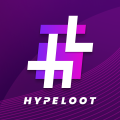Продвижение
Опубликовать ICO
Коины
Calendar
Крипто События
Новости
DeFi
NFT
WEB3
Games
Тренды
-
RU
English Русский Deutsch Español French Italian Portugues Indonesian Turkish Dutch العَرَبِيَّة বাংলা 中文(简体) 한국 हिन्दी 日本語
- Войти

Imagine a scalable, quantum-resistant blockchain securing an uncensorable and free internet through a hack-resistant Operating System, virtualizing access to your desktop and digital content from any computer in the world. Nexus is bringing this possibility to life with an end-to-end decentralized platform designed to empower every human being with technology to reclaim their digital identity.
Your gateway to Nexus begins with a username, password and PIN. Send free and reversible transactions, while staking NXS to receive rewards. Uses range from invoicing clients, to issuing contracts, creating NFTs or Namespaces (Dot-com equivalent).
Nexus’ integrated API makes developing decentralized applications (DApps) easy with “no-code” web tools like Bubble. Create tokens and assets (NFTs), design contracts, or use our templates. All our features are available on the public network or a private (hybrid) chain.
Nexus is a vibrant and creative community with a passion to decentralize the world. Whatever your calling, you can shape the future through your contribution or by simply spreading the word.
TRITIUM
TRITIUM++
AMINE
OBSIDIAN













Это предложение основано на информации, предоставляемой исключительно оферентом и другой общедоступной информацией. Событие продажи или обмена токеном полностью не связано с владельцем ICO, а владелец ICO не участвует в нем (включая любую техническую поддержку или продвижение). Продажи Token, перечисленные у лиц, с которыми не связан ICOholder, показаны только для того, чтобы помочь клиентам отслеживать активность, происходящую в общем секторе токенов. Эта информация не предназначена для консультаций, на которые вы должны положиться. Вы должны получить профессиональную или специальную консультацию или выполнить свою собственную должную осмотрительность, прежде чем принимать или воздерживаться от каких-либо действий на основе контента на нашем сайте. Любые условия, вносимые участниками в отношении приобретения Токенов, заключаются между ними, а эмитент Token и ICOholder не является продавцом таких токенов. ICOholder не несет никакой юридической ответственности за любые представления третьих сторон в отношении любой продажи Token, и любая претензия в связи с нарушением контракта также должна быть сделана непосредственно против зарегистрированного лица Token, перечисленного здесь.
Если у вас есть какие-либо опасения по поводу характера, приличия или законности продажи этого токена или лиц, участвующих в нем, обратитесь в info@icoholder.com с подробной информацией о ваших проблемах.